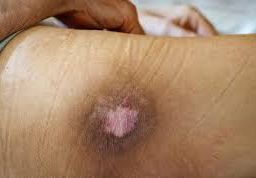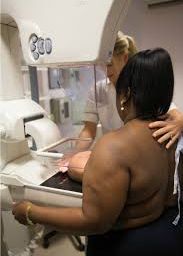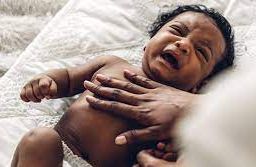
Dengue Fever St. Lucia: Symptoms, and Preventative Strategies
Dengue fever, a growing concern in St. Lucia, poses a significant public health threat. With its tropical climate fostering ideal conditions for the Aedes aegypti mosquito, the primary vector of the virus, the island has witnessed a surge in cases. Join us as we unmask the threat and equip ourselves with knowledge to combat this debilitating disease.


In recent years, St. Lucia has experienced a surge in dengue cases, prompting health authorities to take urgent measures to control the spread of the disease. In this post, we will delve into the pathophysiology, causes, symptoms, complications, preventative strategies, and treatments associated with dengue fever in St. Lucia.
Understanding the Pathophysiology:

Dengue fever is caused by the dengue virus, which belongs to the Flaviviridae family and has four serotypes (DEN-1, DEN-2, DEN-3, and DEN-4), all capable of causing dengue fever. It is primarily transmitted to humans through the bite of infected Aedes mosquitoes, specifically Aedes aegypti. When an infected mosquito bites a person, the virus enters their bloodstream, targeting immune cells and circulating throughout the body. The virus replicates within various immune cells, leading to an immune response and subsequent inflammation. Dengue fever is characterized by its impact on blood vessels and platelets, causing vascular leakage and low platelet count, respectively. This leads to symptoms ranging from mild flu-like illness to severe dengue, also known as dengue hemorrhagic fever or dengue shock syndrome.
Causes and Transmission:

These mosquitoes thrive in warm and humid environments, making St. Lucia an ideal habitat for their reproduction. The Aedes aegypti mosquito typically breeds in stagnant water sources such as flowerpots, discarded tires, and uncovered water containers. As a result, urban areas with inadequate sanitation and water storage practices are particularly vulnerable to dengue outbreaks. St. Lucia’s warm climate and favorable breeding conditions provide an ideal environment for Aedes mosquitoes to thrive.
Symptoms of Dengue Fever:

The symptoms of dengue fever typically manifest within 4 to 10 days after an infected mosquito bite. While most cases of dengue fever are mild and resolve within a week, a small percentage can progress to severe dengue. These symptoms may include:
- High fever (often reaching 104°F or 40°C)
- Severe headache
- Joint and muscle pain
- Skin rash
- Nausea and vomiting
- Mild bleeding from the nose or gums
- Fatigue and weakness
- Pain behind the eyes
Complications Of Dengue:
In severe cases, patients may experience abdominal pain, persistent vomiting, difficulty breathing, and bleeding under the skin. Severe dengue is a life-threatening condition characterized by plasma leakage, organ impairment, and hemorrhagic manifestations. Without prompt medical intervention, severe dengue can lead to shock, organ failure, and even death. It is crucial to seek medical attention if you suspect dengue fever and experience severe symptoms.
Preventative Measures:

Prevention plays a vital role in controlling the spread of dengue fever in St. Lucia. Here are some key preventive measures:
1. Eliminate mosquito breeding sites: Regularly empty and clean containers that can collect stagnant water, such as flowerpots, buckets, and old tires, covering water containers
2. Use mosquito repellents: Apply mosquito repellents containing DEET, picaridin, or oil of lemon eucalyptus to exposed skin and clothing.
3. Wear protective clothing: Cover exposed skin with long-sleeved shirts, long pants, socks, and closed-toe shoes, especially during peak mosquito activity.
4. Install window screens and use bed nets: Keep mosquitoes out by installing window screens and using bed nets while sleeping, particularly for infants, pregnant women, and individuals with compromised immune systems.
5. Community involvement: Engage in community-driven efforts to raise awareness, promote cleanliness, and encourage proper waste management practices to reduce mosquito breeding grounds.

Treatment and Management of Dengue:
Currently, there is no specific antiviral treatment for dengue fever. Medical care focuses on symptom management and supportive measures. It is essential to stay hydrated by drinking plenty of fluids and resting adequately. Pain relief medication (such as acetaminophen) is commonly recommended. Nonsteroidal anti-inflammatory drugs (NSAIDs) should be avoided, as they may increase the risk of bleeding. Severe dengue cases require hospitalization for close monitoring, fluid replacement therapy and management of complications.

Dengue fever remains a significant public health concern in Saint Lucia and many other tropical regions worldwide. Understanding the pathophysiology, causes, symptoms, complications, preventative measures, and available treatment options are crucial in combating this mosquito-borne illness effectively. By promoting awareness, implementing preventive measures, and ensuring timely medical care, we can collectively work towards reducing the impact of dengue fever.
Disclaimer: The information provided in this content is for general informational purposes only. It is not intended as medical or healthcare advice, diagnosis, or treatment. Always seek the advice of a qualified healthcare professional with any questions you may have regarding a medical condition or healthcare decisions.


